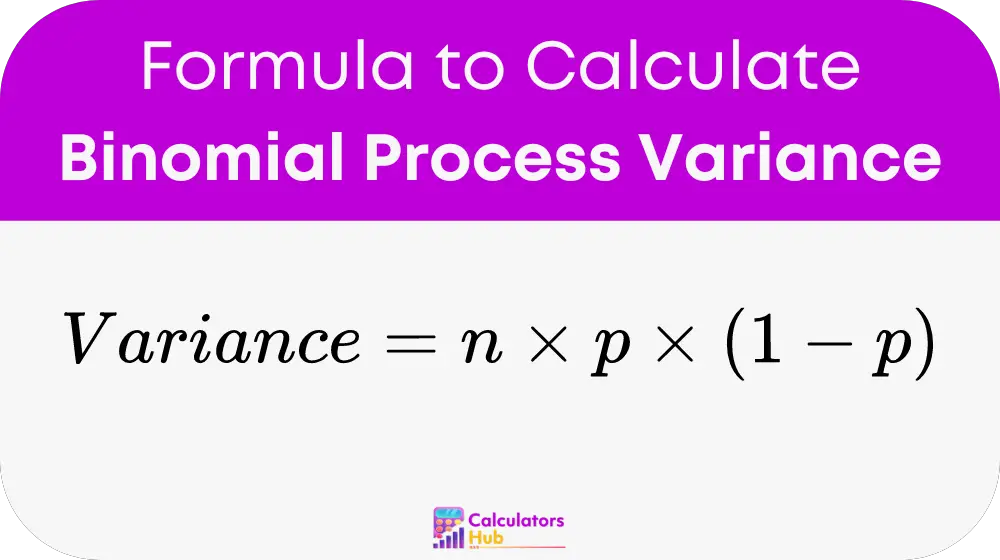The Binomial Process Variance Calculator is a tool used to calculate the variance of a binomial distribution, which is essential in understanding the spread or dispersion of outcomes in a binomial experiment. In statistical terms, variance measures how much the outcomes of a process differ from the expected value. The binomial distribution is particularly important in scenarios where there are two possible outcomes (success or failure) across a fixed number of trials. This calculator is valuable for researchers, statisticians, and data analysts who need to quantify the uncertainty in binomial processes, such as quality control, risk assessment, and decision-making.
Formula of Binomial Process Variance Calculator
The formula used by the Binomial Process Variance Calculator is:

Where:
- n: The number of trials or observations.
- p: The probability of success on each trial.
- (1 – p): The probability of failure on each trial.
This formula provides a straightforward way to calculate the variance of a binomial distribution, reflecting how much the outcomes can deviate from the expected number of successes.
General Reference Values
Here’s a table that provides examples of how different values of n and p affect the variance in a binomial process. This table can help you quickly estimate the variance for common scenarios without performing the calculation each time.
| Number of Trials (n) | Probability of Success (p) | Probability of Failure (1 – p) | Variance (n * p * (1 – p)) |
|---|---|---|---|
| 10 | 0.5 | 0.5 | 2.5 |
| 20 | 0.3 | 0.7 | 4.2 |
| 50 | 0.6 | 0.4 | 12 |
| 100 | 0.1 | 0.9 | 9 |
This table illustrates how the variance changes with different numbers of trials and probabilities of success, helping in the planning and analysis of binomial experiments.
Example of Binomial Process Variance Calculator
Let’s walk through an example to see how the Binomial Process Variance Calculator works in practice.
Scenario:
You are conducting an experiment where you flip a fair coin 20 times, and you want to calculate the variance of the number of heads (successes).
Calculation:
Using the formula:
Variance = n * p * (1 – p)
Here, n = 20 (number of trials) and p = 0.5 (probability of getting heads).
Variance = 20 * 0.5 * (1 – 0.5)
Variance = 20 * 0.5 * 0.5 = 5
Result:
The variance of the number of heads in 20 coin flips is 5. This means that the number of heads is expected to vary around the expected value (10 heads) with a spread quantified by the variance of 5.
Most Common FAQs
Variance in a binomial distribution indicates the degree of spread or dispersion of outcomes around the expected number of successes. A higher variance means more variability in the outcomes, while a lower variance indicates that the outcomes are more consistently close to the expected value.
Variance is useful in assessing risk, quality control, and decision-making processes. For example, in manufacturing, a high variance in defect rates might indicate a need for process improvements. In finance, variance helps assess the risk associated with investments.
Yes, the calculator can be used for any positive integer value of n (number of trials) and any probability value p between 0 and 1. It’s a versatile tool applicable to a wide range of binomial experiments.